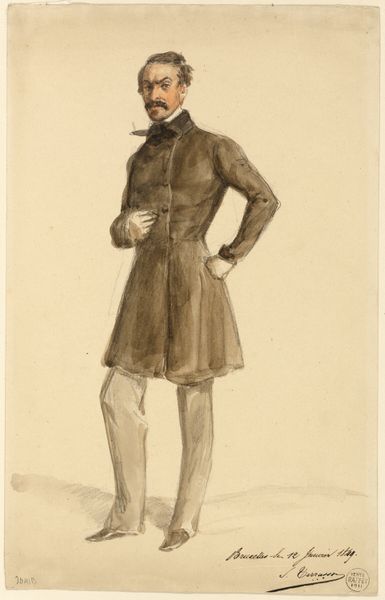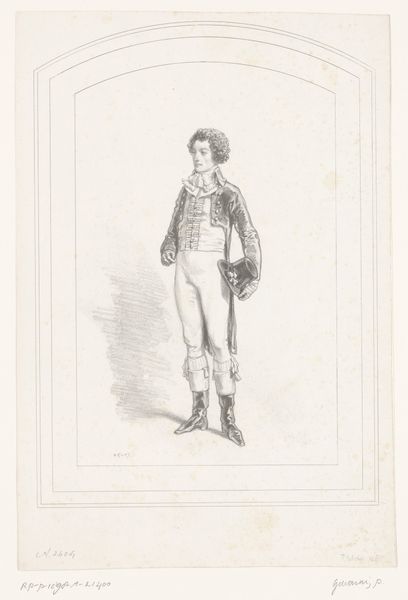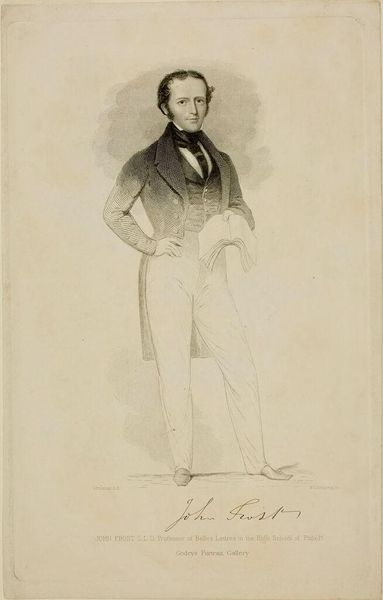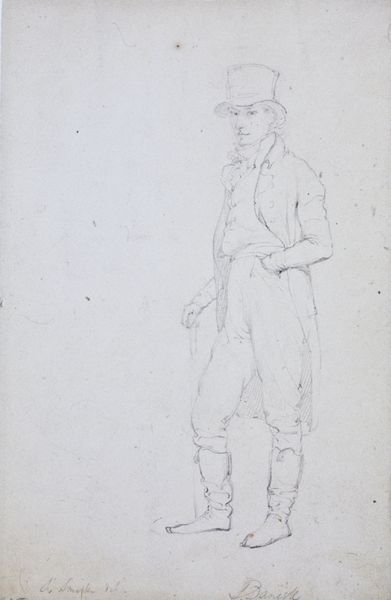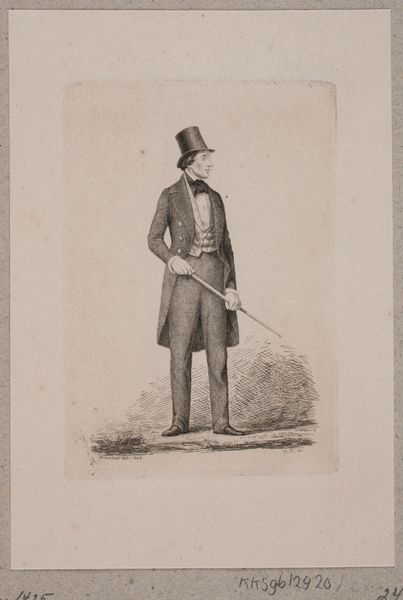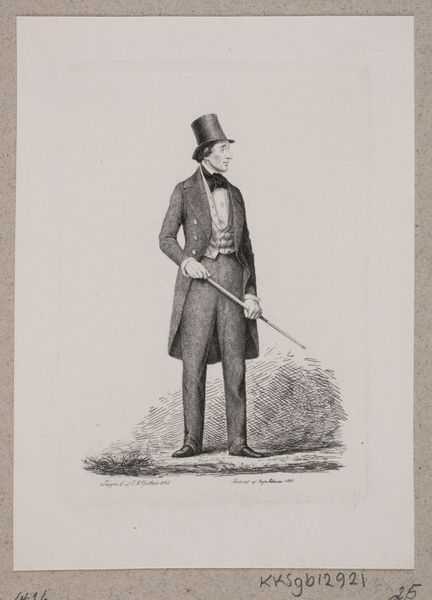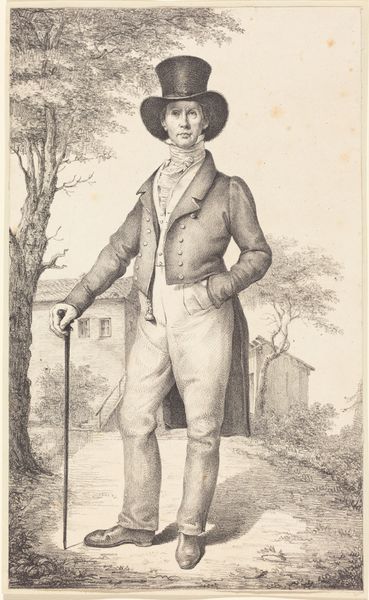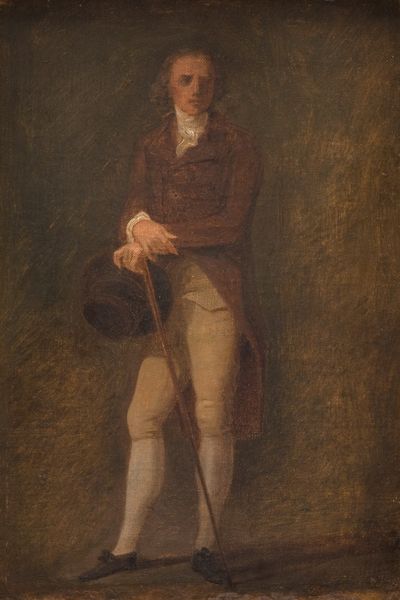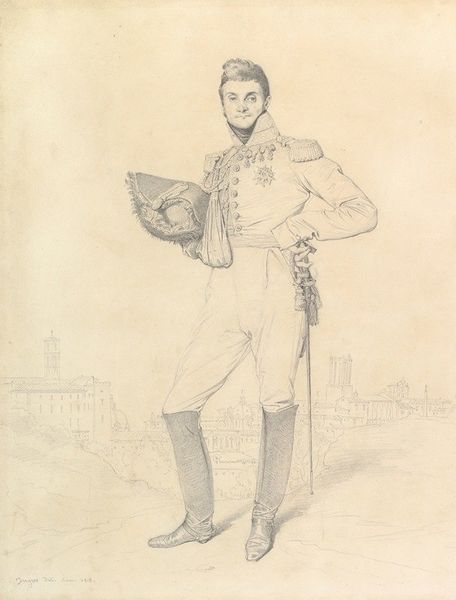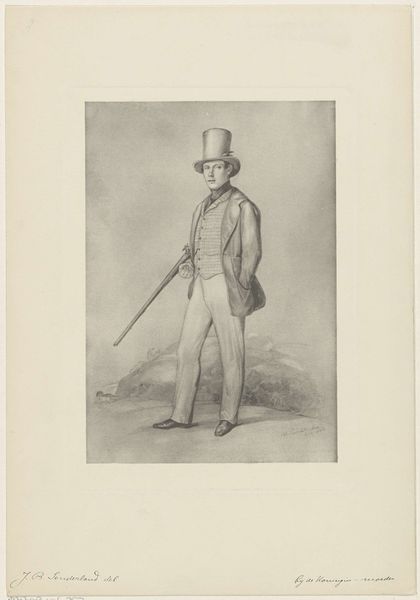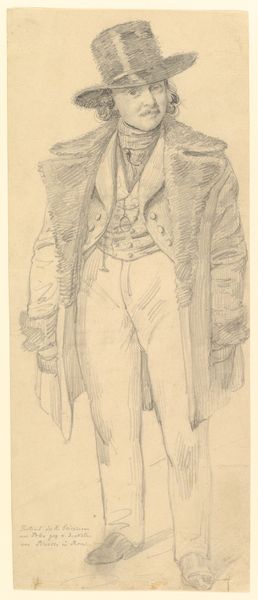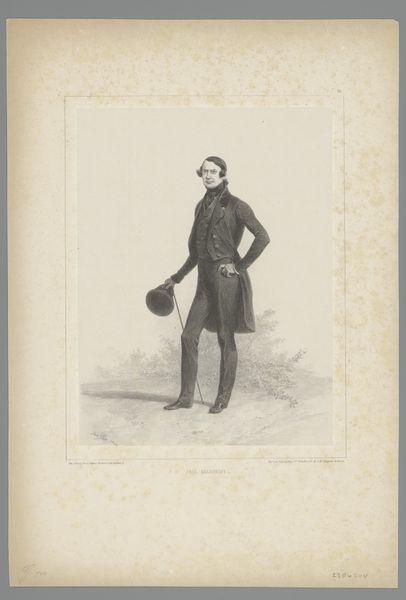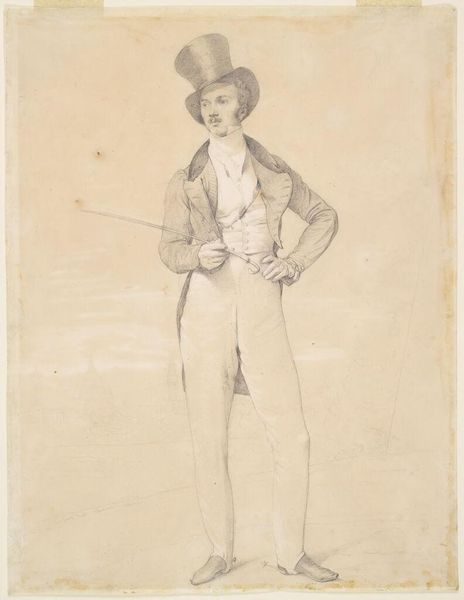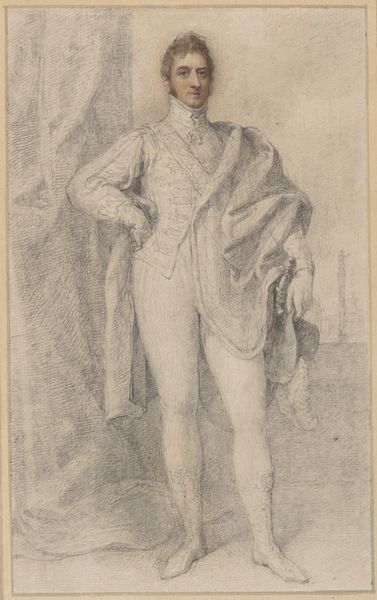
drawing, pencil
#
portrait
#
drawing
#
neoclacissism
#
figuration
#
pencil
#
academic-art
#
realism
Copyright: Public Domain: Artvee
Editor: So, this is Ingres' "Portrait of Lord Grantham," created in 1816, using primarily pencil. The crisp lines and cool detachment give the portrait a distinctly Neoclassical feel. What draws your eye when you look at this drawing? Curator: I see a fascinating study in the construction of identity through material signifiers. The meticulous detail Ingres gives to the Lord’s clothing – the cut of his coat, the sheen on his boots, even the way he holds his hat – speaks volumes about the social and economic structures that shaped his world. Consider the labour involved in producing those goods and Ingres' labor to depict them. It subtly brings the conversation to production and resources. Editor: That’s interesting, I hadn’t considered the clothing itself as a commentary. So, are you saying Ingres is almost documenting the Lord’s status through his possessions? Curator: Exactly! This portrait isn’t just about likeness; it's about communicating power, wealth, and belonging through the careful depiction of textiles, tailoring, and the implied global trade networks that bring these materials to bear. How does this "drawing" speak to high art as opposed to trade practice? Where would these skills normally fit in the early 19th century? Editor: So it almost reads as a catalog of material culture of the time? I’m beginning to see it’s not just *what* he’s wearing, but the fact that these things exist *at all*. Curator: Precisely! By focusing on these material details, Ingres provides insight into the economic and social hierarchies. This then moves art historical analysis to incorporate ideas, rather than traditional high art practices. Editor: That changes how I see the artwork altogether! I had initially thought it was a straightforward portrait, but there’s a whole other layer to unpack in terms of the social context surrounding the artwork itself. Curator: Indeed. This reminds me of how crucial it is to think of art as the end product of production methods and larger economic realities, a perspective which offers insight into Ingres and his practice.
Comments
No comments
Be the first to comment and join the conversation on the ultimate creative platform.
